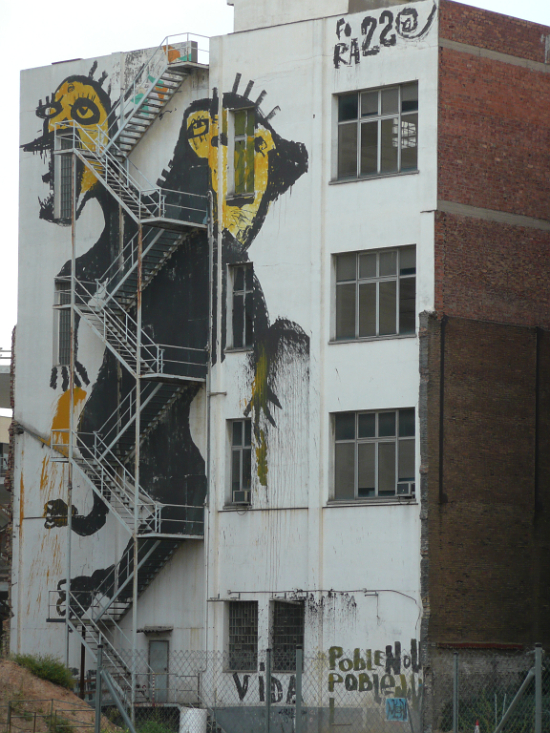Poblenou, Barcelona: Changing Places and Identity, Rebranding and Regeneration
Poblenou - a Catalan word meaning 'new village' - is an extensive neighbourhood of Barcelona, covering 1.5 km² and with a population of more than 30,000 habitants.
During the Industrial Revolution, Poblenou played a central role in Barcelona’s industrialisation, becoming the cornerstone of Catalan industry, particularly in the textile sector, so as to earn the nickname 'Catalan Manchester'. In the mid-19th century, textile factories spread around the main streets. Among the factors promoting this change were the presence of extensive and cheap land, a plentiful water supply and the proximity to Barcelona's port. Poblenou became the industrial neighbourhood of the city.
However, a century after the Industrial Revolution, between 1960 and 1970, the presence of such an extensive industrial area close to the city centre became a problem and the local government decided to build another industrial hub farther away, in the Zona Franca neighbourhood close to the port and airport.
Gradually, local factories and plants became empty and started being used for other purposes, as depots or studios for example. In this phase of decline, the neighbourhood entered a period of urban degradation. The fact of having being designated as industrial land impeded the development of the necessary urban infrastructure, such as housing units, schools, hospitals, green areas. The population started declining and Poblenou became a peripheral neighbourhood.
 |
| Abandoned Poblenou factory with extensive resistance grafitti (2010) |
After a period of decay, Poblenou underwent a further dramatic transformation, with the 1992 Olympic Games being the main trigger, recovering the area and opening the entire city to the sea. Most of the factories and train lines next to the seafront were torn down while those in good shape and located throughout the district were mostly preserved. Many new areas were developed such as the Vila Olímpica (the residential area for the athletes during the Olympics), and new artificial beaches were built.
Poblenou's revitalisation continues with a new plan - called 22@ - aimed at reviving the entire area through the creation of a 200 hectare technological and innovation district, which was approved by Barcelona’s City Council in 2000. The 22@ plan followed the Silicon Valley industrial cluster model. It aimed to create a district of highly innovative companies collaborating with nearby universities and high-tech start-up incubators. As well as clearing up to 70% of Poblenou’s disused industrial land, the project has created parks, subsidised housing, rebuilt much-needed infrastructure and provided a blueprint for similar projects in other cities. The 2008 financial crisis reduced momentum, but development continues.
22@ has brought new green spaces, LED street lights, wider roads and other improvements to the neighbourhood quality of life. However it has also meant the loss of heritage. The artistic profile of Poblenou’s more creative residents has changed too.
There have been two broad phases of artistic regeneration. The first was characterised by painters and sculpturists, setting up studios in abandoned factories, often for free. A second wave of colonisers has moved in as the availability of abandoned properties has gradually diminished. These typically work digitally, and include designers, architects and people working in the new media of sound and film. They are coming for the affordable modernised warehouses with plenty of space and light. The growth of co-working spaces is the most visible sign of this change.
A number of heritage sites help to protect Poblenou's rich industrial legacy. However, a process of gentrification has taken place with social conflict linked to a number of factors. The rising price of housing, immigration related-issues, problems deriving from the development of new hotels, the booming of the tourist industry and the loss of local workshops, bars and restaurants all contribute to a strong culture of resistance to change. The search for authenticity in Poblenou is precisely one of the factors diluting it.
The focus of our work in Poblenou is to investigate:
- how people engage with places, their experience of them and the qualities they ascribe to them;
- changing identity;
- the need for, and impacts of regeneration and rebranding.
A-level orientation activities
- Explore the place identity of Poblenou and ways it has been represented.
- Find evidence of differing views about Poblenou’s place identity and representations.
- Explore the need for and impacts of regeneration in Poblenou.
- Explore the need for and impacts of rebranding in Poblenou.
- Look for evidence as to who is responsible for shaping the changes in Poblenou.
- Think about how the changes in Poblenou are part of a bigger picture of changing Barcelona.
